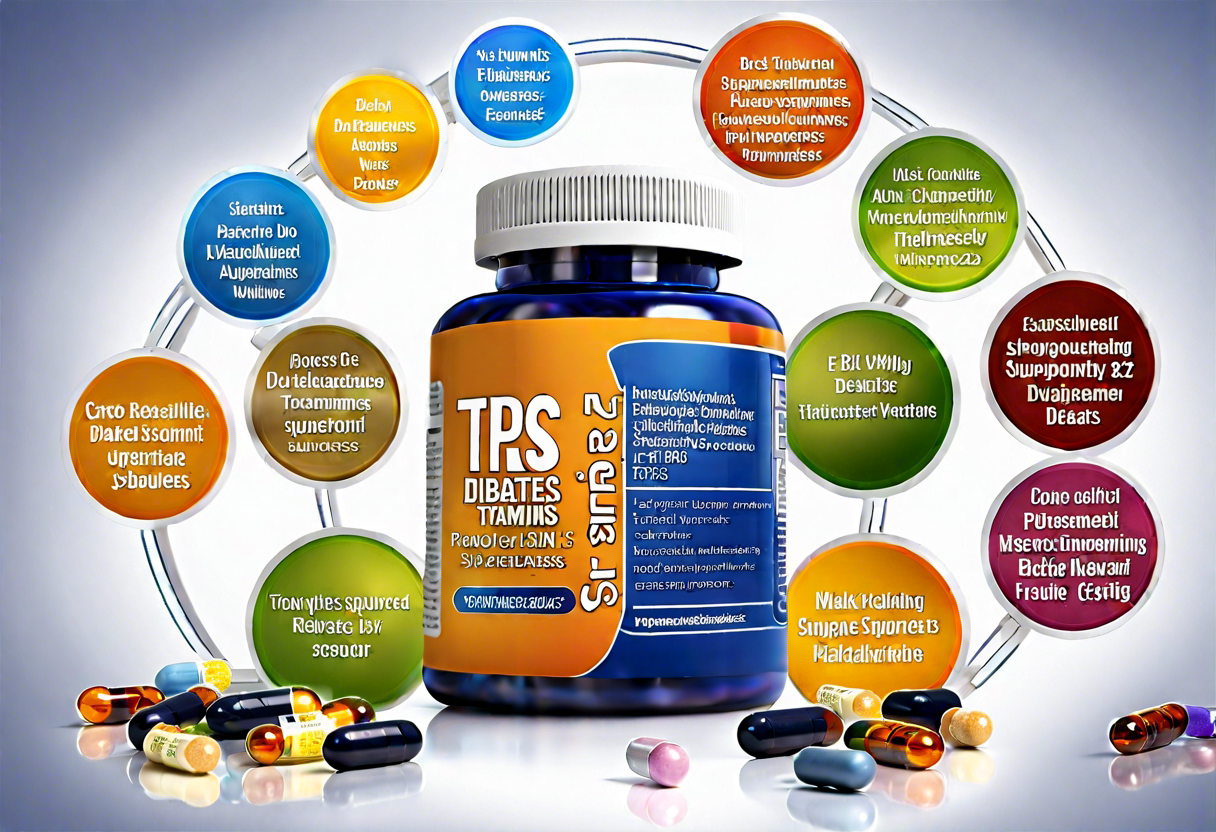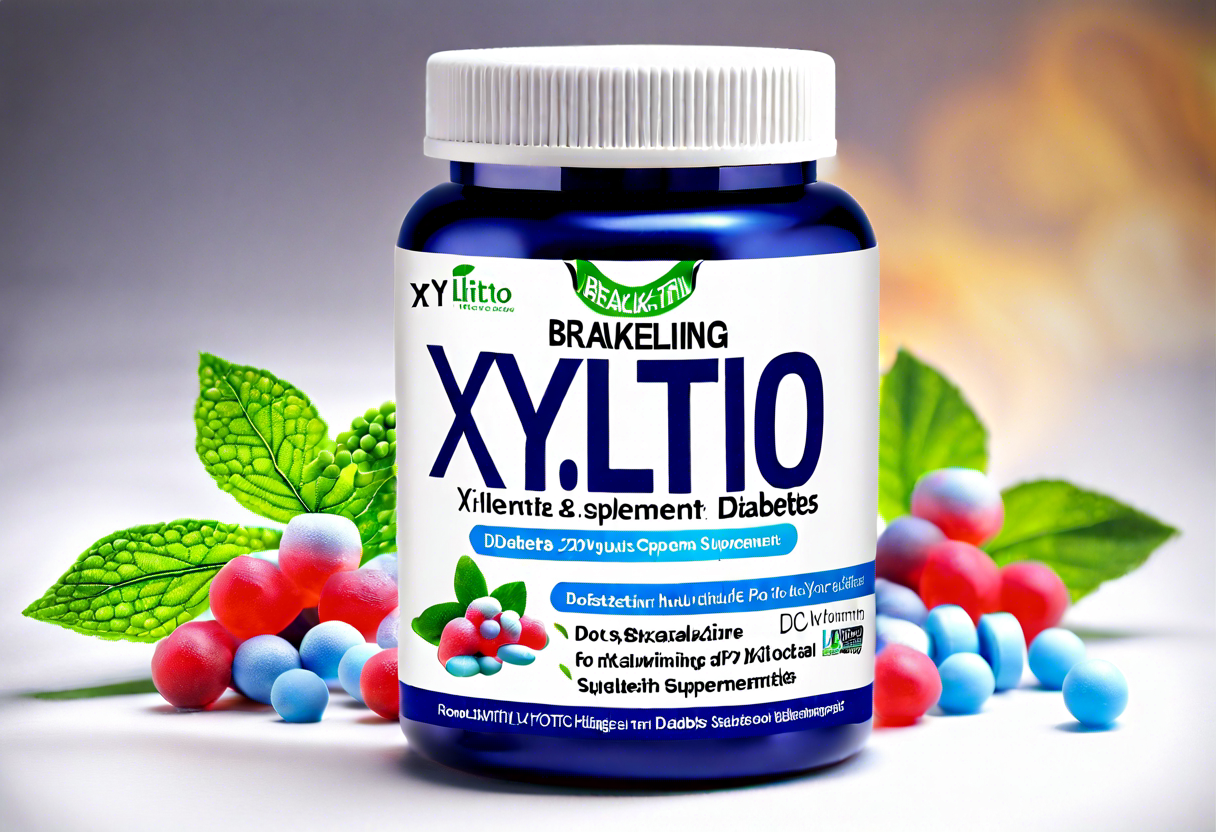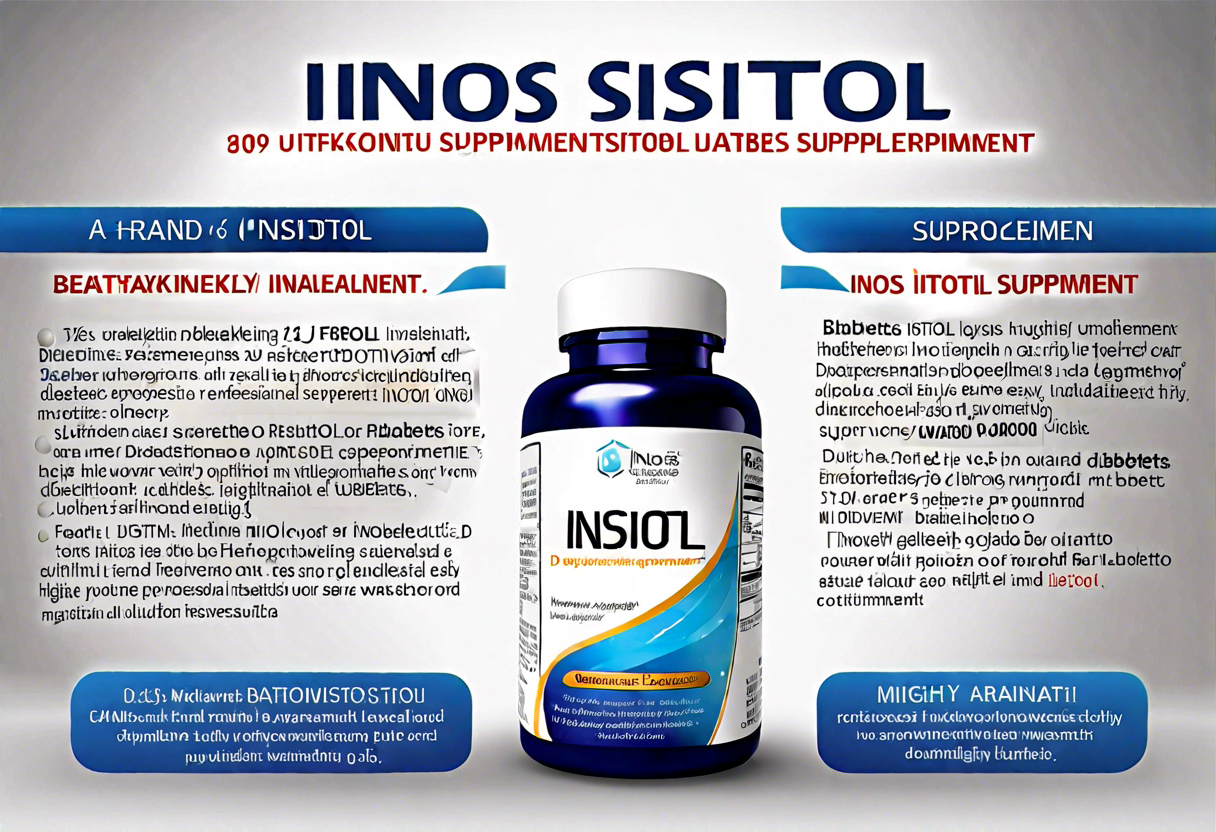Understanding Prediabetes: Causes, Symptoms, and Risk Factors
Prediabetes is a condition where blood sugar levels are higher than normal but not yet high enough to be classified as type 2 diabetes. It is an alarming situation as it increases the risk of developing type 2 diabetes, heart disease, and stroke. Understanding the causes, symptoms, and risk factors associated with prediabetes is crucial for early intervention and prevention.
The exact cause of prediabetes is still unknown, but there are several factors that contribute to its development. One of the primary causes is insulin resistance, where the body’s cells do not respond properly to insulin. This results in elevated blood sugar levels. Other risk factors include a family history of diabetes, sedentary lifestyle, unhealthy eating habits, and being overweight or obese. Age, race, and certain medical conditions such as polycystic ovary syndrome (PCOS) and gestational diabetes can also increase the risk of prediabetes.
Prediabetes often does not present any noticeable symptoms, which is why it is often referred to as "the silent killer." However, some individuals may experience symptoms such as increased thirst, frequent urination, fatigue, blurred vision, and slow wound healing. If you notice any of these symptoms, it is essential to consult a healthcare professional for a proper diagnosis and evaluation of your blood sugar levels.
Early detection of prediabetes is vital to prevent its progression to type 2 diabetes. Regular check-ups, including blood sugar screenings, can help identify prediabetes in its early stages. Lifestyle changes play a crucial role in reversing prediabetes naturally. The primary focus should be on adopting a healthy eating plan and increasing physical activity. A well-balanced diet that is low in refined sugars and carbohydrates can help regulate blood sugar levels. whole grains, lean proteins, fruits, vegetables, and healthy fats into your diet can make a significant difference.
Physical activity and exercise are also essential in managing prediabetes. Regular exercise helps improve insulin sensitivity and promotes weight loss, which in turn enhances blood sugar control. Aim for at least 150 minutes of moderate-intensity aerobic physical activity per week, along with strength training exercises.
Furthermore, managing stress levels through relaxation techniques such as deep breathing, meditation, and yoga can also contribute to reversing prediabetes. Chronic stress can elevate blood sugar levels, so finding healthy ways to cope with stress is essential.
Understanding the causes, symptoms, and risk factors associated with prediabetes is crucial for early intervention and prevention. By making lifestyle changes such as adopting a healthy eating plan, increasing physical activity, and managing stress levels, it is possible to reverse prediabetes naturally and reduce the risk of developing type 2 diabetes. Regular check-ups and consultations with healthcare professionals are essential for monitoring blood sugar levels and ensuring overall well-being.
Understanding the Importance of Lifestyle Changes in Reversing Prediabetes
The Role of Lifestyle Changes in Reversing Prediabetes
When it comes to reversing prediabetes naturally, one of the most crucial aspects is making positive lifestyle changes. Prediabetes is a condition where blood sugar levels are higher than normal but not yet high enough to be classified as type 2 diabetes. By implementing certain lifestyle modifications, individuals with prediabetes can significantly reduce their risk of developing diabetes and even return their blood sugar levels to a normal range.
Dietary Changes: One of the key components in reversing prediabetes naturally is adopting a healthy eating plan. This means incorporating a variety of nutrient-dense foods, such as whole grains, fruits, vegetables, lean proteins, and healthy fats. Avoiding processed foods, sugary beverages, and excessive intake of carbohydrates is essential. Consider consulting a registered dietitian who can provide personalized guidance and help create a meal plan tailored to individual needs.
Physical Activity and Exercise: Engaging in regular physical activity is another vital lifestyle change that can have a significant impact on prediabetes. Exercise helps to improve insulin sensitivity, allowing the body to use glucose more efficiently. Aim for at least 150 minutes of moderate-intensity aerobic activity, such as brisk walking or cycling, per week. Additionally, incorporating strength training exercises at least two days a week can help build muscle mass and further enhance insulin sensitivity.
Stress Management: Chronic stress can contribute to the development and progression of prediabetes. Finding effective stress management techniques, such as meditation, deep breathing exercises, yoga, or engaging in hobbies, can help reduce stress levels and promote overall well-being. Making time for self-care activities is essential in managing stress and preventing the onset of type 2 diabetes.
Quit Smoking: Smoking not only increases the risk of various health conditions but also worsens insulin resistance. By quitting smoking, individuals can significantly lower their risk of developing diabetes and improve their overall health. Seek professional help and support to successfully quit smoking.
Get Quality Sleep: Adequate sleep is essential for maintaining overall health, including blood sugar regulation. Poor sleep patterns and insufficient sleep duration have been associated with an increased risk of developing diabetes. Aim for 7-9 hours of quality sleep per night, and establish a regular sleep routine by going to bed and waking up at consistent times.
Regular Monitoring: Regularly monitoring blood sugar levels can provide valuable insights into the effectiveness of lifestyle changes in reversing prediabetes. It allows individuals to identify patterns, make necessary adjustments, and track progress towards achieving normal blood sugar levels. Consult a healthcare professional to determine the appropriate monitoring frequency based on individual circumstances.
Implementing positive lifestyle changes is crucial in reversing prediabetes naturally. By adopting a healthy eating plan, engaging in regular physical activity, managing stress effectively, quitting smoking, getting quality sleep, and monitoring blood sugar levels, individuals can take control of their health and significantly reduce their risk of developing type 2 diabetes.
Dietary Approaches for Reversing Prediabetes Naturally
Maintaining a balanced and nutritious diet is crucial when it comes to reversing prediabetes naturally. Making dietary changes can help regulate blood sugar levels, improve insulin sensitivity, and reduce the risk of developing type 2 diabetes. By incorporating these dietary approaches into your daily routine, you can take control of your health and reverse prediabetes.
-
Focus on Whole Foods: Fill your plate with whole, unprocessed foods that are low in added sugars, unhealthy fats, and refined carbohydrates. Include plenty of fruits, vegetables, lean proteins, whole grains, and healthy fats, such as avocados, nuts, and olive oil. These foods are rich in nutrients, naturally low in calories, and help stabilize blood sugar levels.
-
Choose Low-Glycemic Index Foods: The glycemic index (GI) measures how quickly a food increases blood sugar levels. Foods with a high GI can cause spikes in blood sugar, while low-GI foods release glucose more gradually. Opt for low-GI foods like legumes, non-starchy vegetables, whole grains, and lean proteins. These foods provide a steady source of energy and help prevent blood sugar fluctuations.
-
Control Carbohydrate Intake: Carbohydrates have the most significant impact on blood sugar levels. While it’s essential to include carbohydrates in your diet, focus on complex carbohydrates that are high in fiber, such as whole grains, legumes, and vegetables. Fiber slows down the absorption of sugars, preventing sharp rises in blood glucose levels.
-
Reduce Added Sugars: Added sugars, such as those found in sugary beverages, processed snacks, and sweets, can contribute to insulin resistance and elevated blood sugar levels. Limit your intake of sugary foods and drinks, and opt for natural sweeteners like stevia or small amounts of honey or maple syrup when needed.
-
Pay Attention to Portion Sizes: While choosing nutritious foods is vital, portion control also plays a significant role in managing blood sugar levels. Be mindful of portion sizes and avoid overeating. Consider using smaller plates and bowls, which can help control portion sizes visually.
-
Stay Hydrated: Water is essential for maintaining overall health, including blood sugar control. Aim to drink an adequate amount of water every day. Stay away from sugary drinks like sodas and juices, as they can cause blood sugar spikes.
-
Consider Medical Nutrition Therapy: For personalized advice on dietary approaches to reverse prediabetes, consider consulting a dietitian or healthcare professional who specializes in diabetes management. They can assist you in creating a customized meal plan that suits your specific needs and preferences.
By following these dietary approaches, you can reverse prediabetes naturally and reduce the risk of developing type 2 diabetes. Remember to combine these changes with regular physical activity, stress management techniques, and a healthy lifestyle overall. Taking control of your health is possible, and with the right approach, you can make a significant impact on your well-being.
The Role of Physical Activity and Exercise in Reversing Prediabetes
Regular physical activity and exercise play a crucial role in reversing prediabetes naturally. Engaging in physical activities helps to increase insulin sensitivity and improve blood sugar control. It also aids in weight management and reduces the risk of developing type 2 diabetes.
One of the key benefits of exercise is that it helps to lower blood sugar levels. When muscles contract during physical activity, they utilize glucose as a source of energy, resulting in the reduction of blood sugar levels. This effect can last for several hours after exercise, helping to regulate blood sugar levels over time.
Physical activity also plays a significant role in improving insulin sensitivity. When you exercise, your muscles become more responsive to insulin, allowing glucose to enter the cells more efficiently. This helps to lower blood sugar levels and reduce the strain on the pancreas, which produces insulin.
Additionally, engaging in regular exercise can contribute to weight loss and weight management. Excess body weight is a risk factor for developing prediabetes and type 2 diabetes. When you engage in physical activity, you burn calories, which can lead to weight loss and help to improve insulin sensitivity.
To effectively reverse prediabetes, it is recommended to incorporate a combination of aerobic exercise and strength training into your routine. Aerobic exercises, such as brisk walking, jogging, cycling, or swimming, help to raise your heart rate and increase overall cardiovascular fitness. Strength training exercises, such as weightlifting or resistance training, help to build and maintain muscle mass, which aids in maintaining a healthy weight and improving insulin sensitivity.
It is important to gradually increase the intensity and duration of your exercise routine to prevent injuries and ensure long-term adherence. Aim for at least 150 minutes of moderate-intensity aerobic exercise per week, spread out over several days. Additionally, include two or more days of strength training exercises targeting major muscle groups.
Before starting any exercise program, it is crucial to consult with your healthcare provider, especially if you have any underlying health conditions or concerns. They can provide personalized recommendations and guidance based on your individual needs and abilities.
Regular physical activity and exercise are essential for reversing prediabetes naturally. Physical activity helps to lower blood sugar levels, improve insulin sensitivity, aid in weight management, and reduce the risk of developing type 2 diabetes. a combination of aerobic exercise and strength training into your routine can have significant benefits for your overall health and well-being. Remember to consult with your healthcare provider before starting any exercise program.
Stress Management Techniques for Reversing Prediabetes Naturally
Living with prediabetes can be stressful, as it requires making significant lifestyle changes to prevent its progression into type 2 diabetes. Managing stress effectively is crucial in this process as stress can negatively impact blood sugar levels and overall health. By incorporating stress management techniques into your daily routine, you can improve your chances of reversing prediabetes naturally.
One effective technique for managing stress is practicing mindfulness meditation. This involves focusing your attention on the present moment without judgment. By practicing mindfulness regularly, you can reduce stress and improve your overall well-being. Find a quiet space, sit comfortably, and focus on your breath or a specific mantra. Start with just a few minutes each day and gradually increase the duration as you become more comfortable.
Another technique to consider is engaging in regular physical activity. Exercise helps to reduce stress hormones and releases endorphins, which are known to elevate mood and reduce anxiety. Aim for at least 150 minutes of moderate-intensity exercise or 75 minutes of vigorous-intensity exercise each week. You can incorporate activities such as walking, cycling, swimming, or dancing into your routine. Find an activity that you enjoy and make it a regular part of your schedule.
In addition to mindfulness and exercise, it is important to prioritize self-care. Taking time for yourself and engaging in activities that you enjoy can help reduce stress levels. This can include hobbies, spending time with loved ones, engaging in relaxation techniques such as deep breathing or taking a warm bath. Find activities that help you relax and make them a priority in your daily routine.
Another stress management technique is getting adequate sleep. Lack of sleep can increase stress levels and negatively impact blood sugar levels. Aim for 7-9 hours of quality sleep each night. Create a relaxing bedtime routine, limit exposure to electronic devices before bed, and ensure your sleep environment is comfortable and conducive to restful sleep.
Additionally, consider seeking support from loved ones or professional counselors. Talking about your concerns and feelings with someone who understands can help alleviate stress. They can offer guidance, provide emotional support, and help you develop coping mechanisms for managing stress effectively.
Reversing prediabetes naturally is not just about dietary changes and physical activity; it also requires managing stress. By incorporating stress management techniques, such as mindfulness meditation, regular exercise, self-care, and adequate sleep, you can reduce stress levels and improve your overall health. Remember to find what works best for you and make stress management a priority in your journey towards reversing prediabetes naturally.
Conclusion
Prediabetes is a condition that indicates elevated blood sugar levels and an increased risk of developing type 2 diabetes. Understanding the causes, symptoms, and risk factors of prediabetes is crucial in taking the necessary steps to reverse the condition and prevent the progression to diabetes.
Lifestyle changes are integral in reversing prediabetes naturally. Adopting a healthier way of living can significantly improve blood sugar control and reduce the risk of developing type 2 diabetes. By making mindful choices about diet, exercise, stress management, and other lifestyle factors, individuals with prediabetes can enhance their overall well-being and reverse the condition.
Diet plays a key role in reversing prediabetes. By focusing on whole, unprocessed foods and incorporating more fruits, vegetables, whole grains, and lean proteins into their diet, individuals can improve their insulin sensitivity and better regulate blood sugar levels. Avoiding sugary and processed foods, as well as monitoring portion sizes and practicing mindful eating, are crucial steps in managing prediabetes naturally.
Physical activity and exercise are essential in improving insulin sensitivity and reversing prediabetes. Engaging in regular physical activity, such as walking, jogging, cycling, or swimming, can help control blood sugar levels and promote weight loss. Aim for at least 150 minutes of moderate-intensity aerobic exercise per week, along with strength training exercises to build muscle mass and improve metabolic health.
Stress management techniques are also vital in reversing prediabetes naturally. Chronic stress can elevate blood sugar levels and contribute to the progression of prediabetes. Practicing relaxation techniques, such as deep breathing exercises, meditation, or yoga, can help alleviate stress and improve overall well-being. Additionally, getting enough sleep and engaging in activities that bring joy and relaxation, such as hobbies or spending time with loved ones, can also contribute to stress reduction.
Reversing prediabetes naturally requires a holistic approach that encompasses various lifestyle changes. By understanding the causes, symptoms, and risk factors of prediabetes, individuals can take proactive steps towards improving their health and preventing the progression to type 2 diabetes. Through dietary modifications, regular physical activity, stress management, and other lifestyle adjustments, it is possible to reverse prediabetes and achieve long-term well-being. By making these positive changes, individuals can take control of their health and reduce their risk of developing type 2 diabetes.









